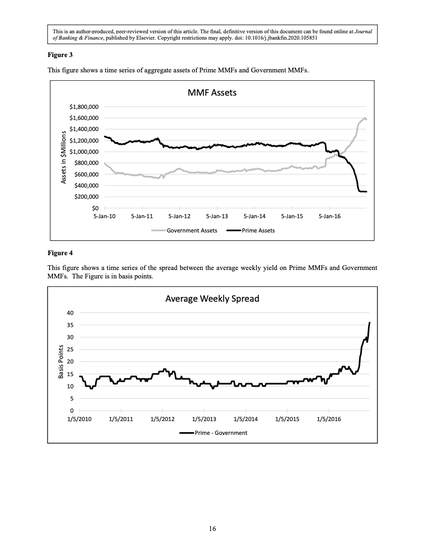
From the inception of money market funds (MMFs), all MMFs reported a fixed $1 NAV (Net Asset Value). In July 2014, the Securities and Exchange Commission (SEC) issued new regulations for MMFs that require Prime institutional MMFs to report floating NAVs. The SEC did not expect a significant impact on the MMF industry from requiring floating NAVs for Prime institutional funds. We find that over 70% of the assets under management in Prime MMFs left Prime funds with over half the Prime funds closing. We find that more than half of the Prime retail MMFs (which are not required to switch to floating NAV) closed with more than 50% of the assets under management exiting these funds. Finally, we find that for every dollar that exited Prime MMFs a dollar was added to Government MMFs. Based on the SEC’s economic discussions, these results all represent unexpected consequences.
This is an author-produced, peer-reviewed version of this article. © 2020, Elsevier. Licensed under the Creative Commons Attribution-Noncommercial-No Derivative Works 4.0 license. The final, definitive version of this document can be found online at Journal of Banking & Finance, doi: 10.1016/j.jbankfin.2020.105851
